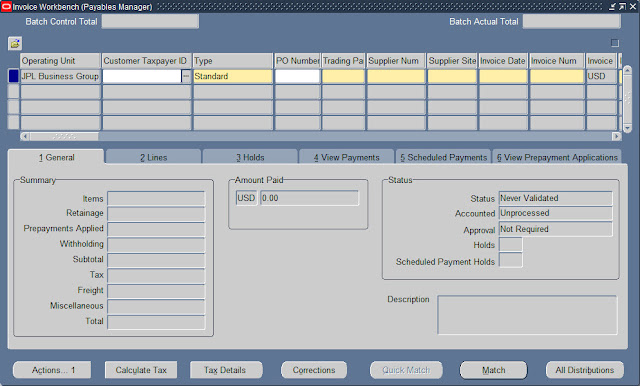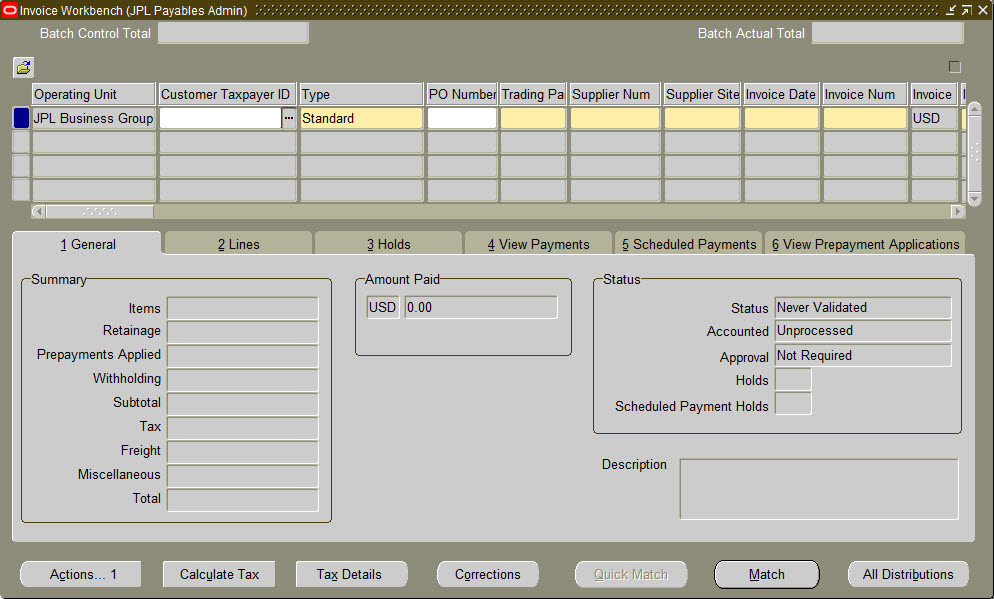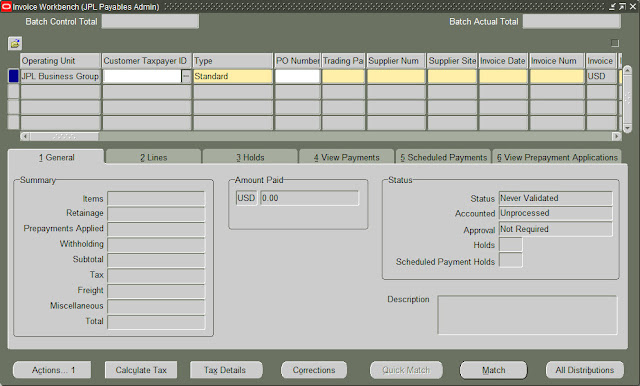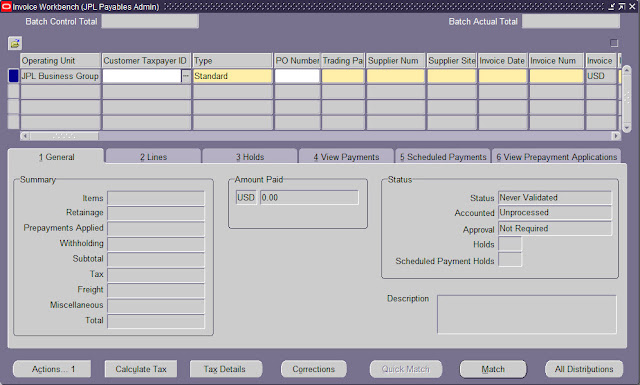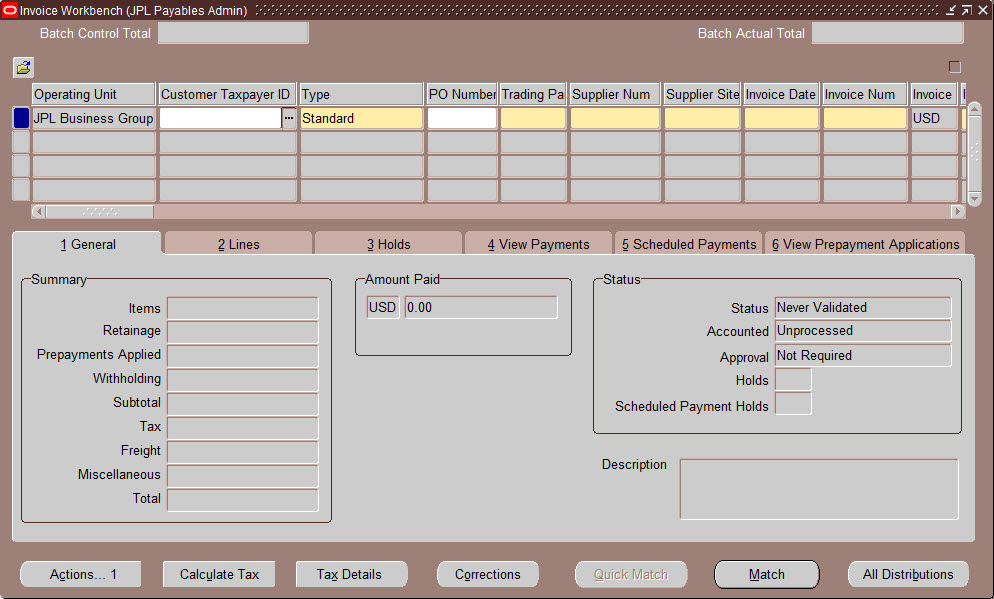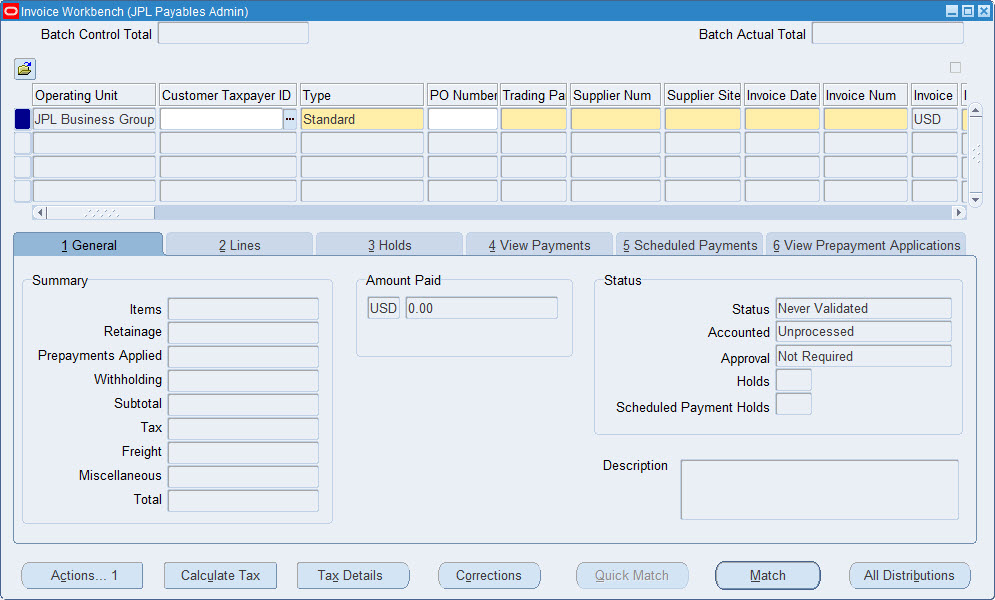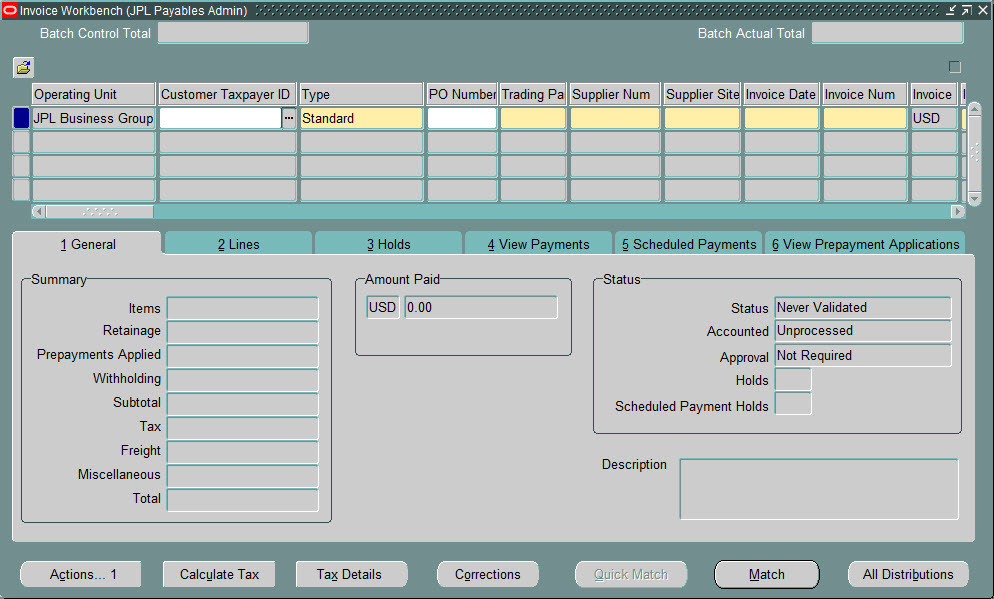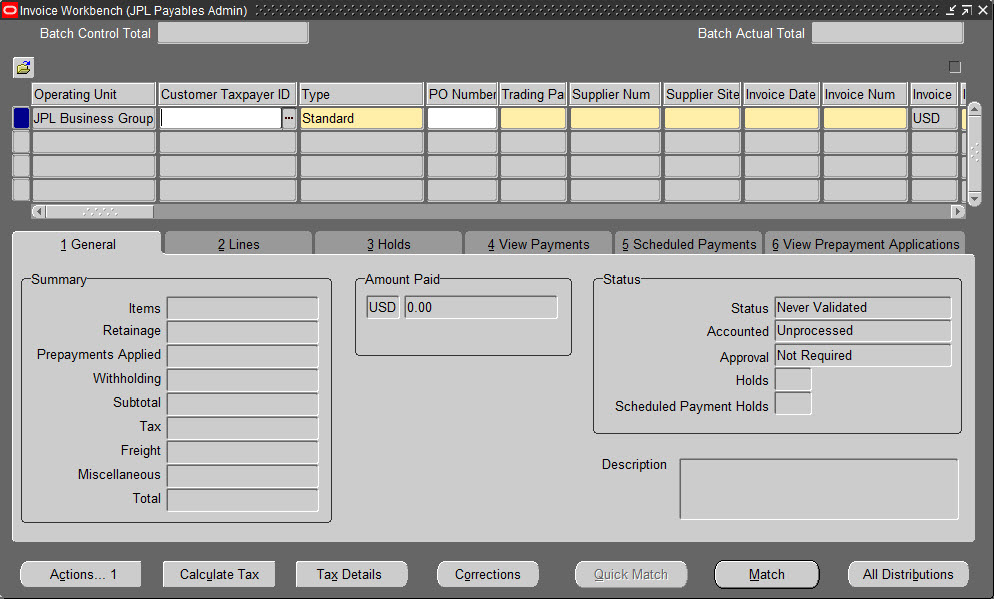Well, personally I have not. But in case you ever did or feel that it may happen to you in future, there is an easy remedy to avoid this. Hence, one of the good reasons why Oracle Applications offer you different color schemes for different Oracle Application instances. Note that, this only applies to Oracle (Java) form.
I use the following color schemes to differentiate different instances from each other.
I use the following color schemes to differentiate different instances from each other.
- TEAL
- Use this color for Development type of instances
- Green color suggests that you are free to make any changes in this instance
- RED
- Use this color for Test type of instances
- Red color suggests that you should proceed carefully in this instance
- SWAN
Navigation:
Any Responsibility > Edit > Preferences > Profiles
Press 'F11' in the Profile Name field. Type 'Java Color Scheme'.
Press Ctrl+F11. From "User Value" drop down list, choose one of the values.


